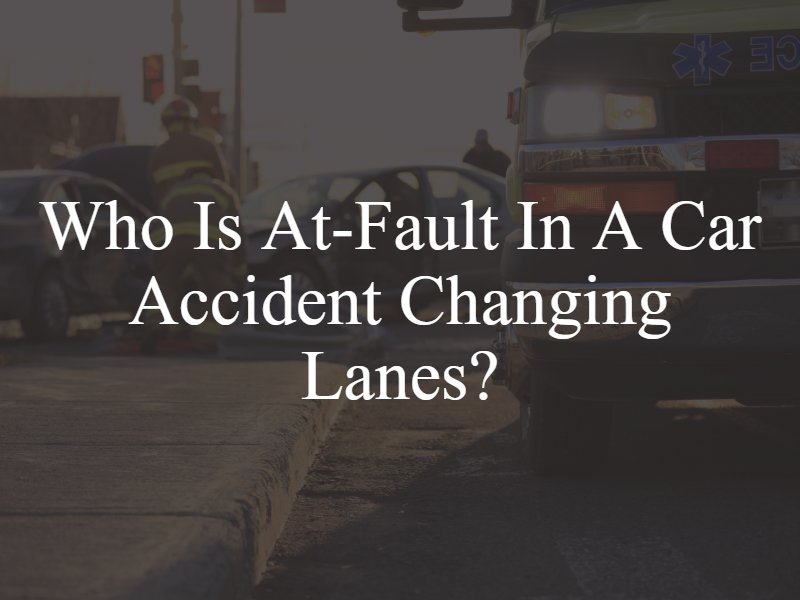Who is At-Fault in a Car Accident Changing Lanes?
Motor Vehicles Accidents - April 30, 2021
Vehicle accidents occur in a wide variety of ways throughout the state of Illinois. In many cases, we will discover that crashes happen due to the careless or negligent actions of one or more drivers. Sometimes, accidents occur when one driver is changing lanes. In these cases, determining liability can be challenging. Here, we want to discuss who will be at fault when a collision occurs while one or more cars are changing lanes. If you are injured by another driving who caused an accident while changing lanes, it might be in your best interest to speak with a car accident attorney in Chicago.
Proving Fault for a Lane Change Accident in Illinois
Most vehicle accidents occur because of a driver’s negligent actions. This holds true for accidents involving lane changes. When these collisions occur, it is not uncommon for a responding police officer to cite one driver for failure to yield after the investigation. In some cases, a lane change accident could be the fault of more than one driver. This can all create confusion when it comes to obtaining compensation from an insurance settlement.
All drivers owe a duty of care to others around them. This means that any driver who gets behind the wheel of a vehicle is responsible for operating that vehicle safely. This responsibility includes a driver’s actions when changing lanes.
When a driver needs to change lanes, they must activate their turn signal in the direction they want to go. This lets other drivers know about the impending change, but activating the turn signal does not give a driver the right to change lanes whenever they feel like it. Any driver wanting to change lanes must check their surroundings (including mirrors and blind spots) to make sure that they have a clear space to move to. A driver cannot force other vehicles to move out of their way so they can complete lane change.
There are various ways in which the driver who changes lanes could be at fault if a collision occurs. This includes:
- If the driver failed to activate their turn signal and then collided with another vehicle.
- If the driver did not check the mirrors or blind spots before changing lanes and struck another vehicle.
- If the driver crossed multiple lanes without stopping in each individual lane, causing a collision.
In most lane-changing situations, any driver that wishes to enter a lane already occupied by another vehicle and causes a collision will likely be at fault for the incident. However, there are some scenarios where more than one driver could be at fault for a lane-changing accident. This could include:
- If both drivers were changing lanes at the same time, resulting in a sideswipe or side-impact collision.
- If any of the drivers exhibited reckless, distracted, or impaired driving behaviors.
- If a driver rear-ends a vehicle that has already completed a lane change (this could indicate that the driver was operating too fast for conditions).
- If a vehicle in one lane is experiencing vehicle failure, such as a faulty headlight or faulty brake light, that could mislead other drivers wishing to change lanes.
Merging Into Traffic – A Tricky Situation
There are various reasons why one driver may need to merge into traffic, and this is usually seen when merging from one street onto another (often a highway). In these scenarios, drivers entering the new roadway will have to yield to the vehicles already on the roadway. Any driver wishing to merge must activate their turn signal and wait until there is a traffic opening for them to merge into. Sometimes this requires the drivers wishing to merge to come to a complete stop while they wait for a clear path. Oncoming drivers are not responsible for slowing down or changing lanes to allow others to merge more easily.



